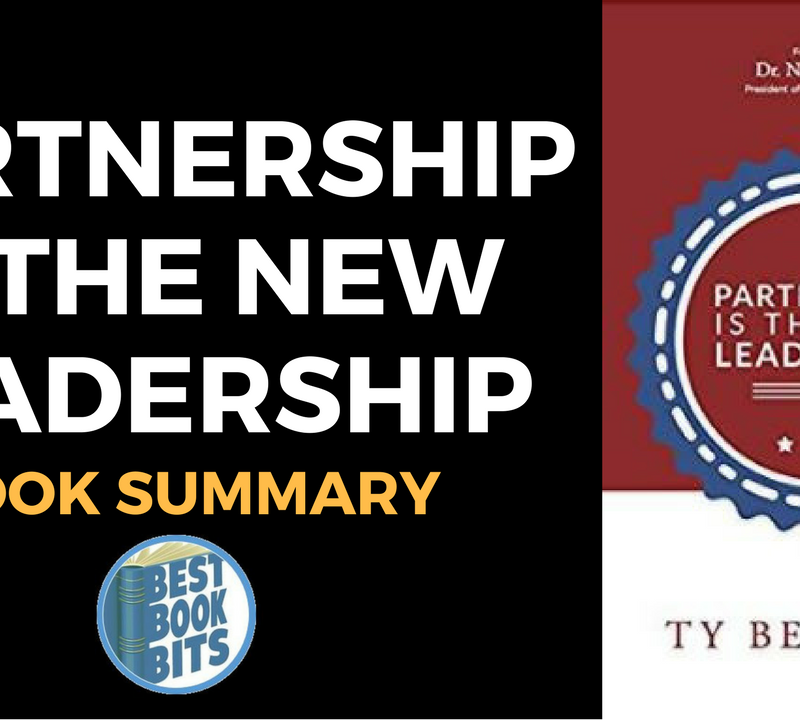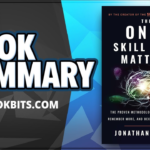★DOWNLOAD THIS FREE PDF SUMMARY HERE
? MY FREE BOOK TO LIVING YOUR DREAM LIFE”
? SPONSOR BESTBOOKBITS BY USING PATREON
? SUPPORT BESTBOOKBITS BY CLICKING THE LINKS BELOW
- 150 PDF Summaries
- Coaching Program
- Subscribe to My Channel
- Website
- Spotify
- Book Club
- Mailing List
The Book in Three Sentences
- Life is an orderly collection of individual linear systems each of which can be improved and perfected one at a time.
- A business’ mechanical functioning is a result of the systems that comprise it.
- Getting what you want—in life and work—lies in focusing on ‘working the systems’ that create the results.
The Five Big Ideas
- Your life and business are a result of systems you have complete control, systems over which you have no control at all, and systems over which you have some but not complete control.
- The Work the System methodology involves (1) documenting your systems, (2) separating, dissection, and repairing your systems, and (3) maintaining your systems on an ongoing basis.
- Ninety-eight percent accuracy is “perfect” because trying to achieve that additional 2 percent demands too much additional energy.
- “Systems are the invisible threads that hold the fabric of our lives together.”
- The Work the System documentation includes (1) a Strategic Objective, (2) General Operating Principles and (3) Working Procedures.
- “Your life is composed of systems that are yours to control—or not control.”
- “The simplest solution is invariably the most correct solution.”
- “A life’s mechanical functioning is a result of the systems that compose it.”
- “If it is true that ‘a life’s mechanical functioning is a result of the systems that compose it,’ then getting what you want in life does not lie in manipulating outcomes; doing that is a distraction. Rather, getting what you want lies in delving deeper, in focusing on ‘working the systems’ that create the results.”
- “We make things worse in the long term by violating systems in the short term, as we ignore the simple truth that disruption of an efficient system always has its price.”
- “There is a direct connection between happiness and the amount of control we attain.”
- “Happiness is not found in the control we have over others. It’s found in the control we have over the moment-to-moment trajectory of our own lives, and more exactly—here we get to the root of things—the control of the personal systems that are ours to adjust and maintain.” “Orderliness and attention to detail are the roots of peace.”
- “As we focus on the events outside ourselves that we cannot control, we overlook the imperfect aspects of our own lives that we can control.”
- “We don’t recognize that recurring personal pain is not often the result of a flawed world, but more usually the result of our own flawed personal systems—systems we can repair.”
- “If we don’t overtly take control of the forward flow of our own lives, the mistake of a lifetime is just around the corner, ready to flatten us when we least expect it.”
- “Short, quality products or services, a stable staff, and profitability are the result of the quality systems that produce them, not the reverse.”
- “As you go through your day, think of systems you can implement that will prevent problems down the line.”
- “Is there something you do to your body that is making it less efficient? Are you excelling in system management in some areas while sabotaging yourself in others?”
- “Systems want to be efficient.”
- “In the systems that compose the world’s workings, there is not a cosmic inclination for chaos. Rather, there is a default propensity toward order and efficiency.”
- “By fixing your life’s individual systems—by identifying them one at a time and then rebuilding them one by one—order, control, and peace accumulate incrementally.”
- “In the workplace, permanence happens first by creating written descriptions of how systems are to operate, and second by making sure responsible parties follow the steps described in the documentation.”
- “Systems are the invisible threads that hold the fabric of our lives together.”
- “Whether an outcome is to your liking or not, the underlying system is performing exactly as it was constructed.”
- “For any recurring problem, there is a path to sorting things out: Take the inefficient system apart and fix the pieces one by one.”
- Ask yourself, “Is there a major problem you are coping with right now? Can you break it down into segments? Can you modify the segments one at a time?”
- “The mantra of the Work the System method is to isolate-fix-maintain.”
- “It is not enough to know what to do. One must take action.”
- A system is “a group of interacting, interrelated, or interdependent elements forming a complex whole.”
- “Silent and invisible, your systems work without pause. Sometimes they work alone, but often they work together. They support and complement each other—and sometimes they fight each other.”
- “The Work the System methodology itself is a system. It’s the controlling management tool used to analyze and maintain your personal systems. It’s the master control mechanism for organizing yourself into an efficient life: a life of serenity, prosperity, and contribution.”
- “If the majority of time is spent examining and tweaking systems to perfection, great results will materialize.”
- “Stop looking for a sudden hand-of-God solution to problems. Drop the idea that life is convoluted and mysterious, strip away the complexity, and get to work repairing the underlying inefficient mechanisms one by one.”
- “Too often we go after a holistic, bumper-sticker solution when it would be more sensible to simply examine the primary system’s context and fix a faulty component.”
- “One can compensate for the negative outcome of a recurring problem, but without repairing the errant system that caused the problem, the problem will undoubtedly occur again.”
- “The improvement of a system is a system improvement, and the documentation of that system improvement is called a Working Procedure.”
- “It’s a beautiful thing, this system-improvement process, because as time passes things improve. Imagine a system that improves with time rather than wears out.”
- “Your job is not to be a fire-killer. Your job is to prevent fires.”
- “Most problems stem from nonexistent system management and show themselves as errors of omission.”
- “Once you get the systems perspective, you will see fire-killing all around you.”
- “What is the most important difference between the manager of a large successful business and the manager of a small struggling business? The first manages systems; the second copes with bad results.”
- “Each thing we do is a component of a system.”
- “First, make the various systems consciously visible. Second, one at a time, bring them to the foreground for examination. Third, adjust them. Fourth, document them. Fifth, maintain them.”
- You must stand outside of it if you are to see how you are a part of the larger system.
- “Getting things right most of the time is good enough.”
- “Once the Work the System methodology is internalized and applied, you will be a different person.”
- “The Strategic Objective is your Declaration of Independence, your mandate for a better future. The General Operating Principles document is your Constitution, a set of guidelines for future decision making. The Working Procedures are your laws, the rules of your game.”
- “A primary thrust of the Work the System method is to generate extra time so you can better prepare.”
- “The largest obstacle to better preparation is the reluctance to invest the necessary time to be better prepared.”
The Work the System Documentation
- Strategic Objective.The one-page Strategic Objective document will provide overall direction for your business and your personal life.
- General Operating Principles.Just two or three pages long, this condensed “guidelines for decision making” document requires ten to twenty hours to complete, but these hours will be spread over a period of a month or two.
- Working Procedures. This documentation is the specific collection of protocols that outline exactly how the systems of your business or your job will operate. Ninety-five percent of your procedures will follow a 1-2-3 step format. The other 5% will follow an open, “narrative” format.
- “First you work your systems. Then your systems do the work.”
- “Management works in the system; leadership works on the system.” —Stephen Covey
- “Avoid becoming caught up in the work. Instead, step outside, look down, and isolate individual systems on paper in a 1-2-3 format. Then, deciding overall what you want the systems to accomplish, identify defects as well as outside changing situations. Then improve the systems, always documenting those improvements.”
- “Right this minute, looking around from the space you now occupy, is there a system that can be improved?”
- “The successful leader’s job is to keep the wheels of the mechanism turning at full speed, and with enormous efficiency.”
- “Without exception, the businesses that are large and successful are ‘working their systems.’ And the ones without thoughtful direction and structured, sensible protocols—most small businesses—are struggling. Very simple.”
- “An effective process must be set in concrete, and that means creating it in hard and/or soft copy, distributing it, and then ensuring that it is implemented.”
- “If each component of an organization is nearly flawless, the organization as a whole will be nearly flawless.”
- “Getting things too perfect is counterproductive and shortsighted.”
- “It is a choice not to do something that should be done.”
- “Watch the events of your day as they occur, and while they are occurring, ask, ‘What am I not doing right now that is holding me back?’”
- “In everything you do, think beyond immediate temptation and stick with the plan as outlined in your critical documents. Your documentation will keep you from sinking as it relentlessly moves you toward your goals.”
- “Quantity of communication connects directly to any success or failure.”
- “It has been my observation that most people get ahead during the time that others waste time.” —Henry Ford
- “Enormous advancement comes from spending the most alert periods of the day doing the most important system-building tasks.’”
- “For a given primary system, in order to ensure that the desired result occurs over and over again, the task is to adjust that primary system’s subsystems so the correct components are being used and they are sequenced properly.”
- “Focus on the mechanical systems that produce the results, not the other way around, and never doubt that a superb collection of subsystems will produce a superb primary system.”
★DOWNLOAD THIS FREE PDF SUMMARY HERE
? MY FREE BOOK TO LIVING YOUR DREAM LIFE”
? SPONSOR BESTBOOKBITS BY USING PATREON
? SUPPORT BESTBOOKBITS BY CLICKING THE LINKS BELOW













